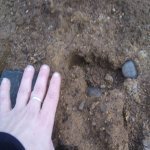I used to be a wool guy, and might be again if/when higher tech supply manufacturing and transportation breaks down, but my warm weather dress has changed yet again.
In short, I'm a military surplus man in either actual surplus or clothing strategy. In my early years in Alaska, Korean War surplus wool combined with modern North Slope blue collar Arctic work wear was what I used. I STILL wear Army bunny boots, and I always will. In my lifetime, technology will never surpass them at an affordable price.
In terms of long underwear, I have a drawer full of them (polyproplyene) and I never wear them (I still wear polypropylene socks and use polypropylene gloves within Army surplus Arctic mittens). When I was young and working on the Alaska Railroad or outside for Army engineering outfits, I wore long underwear. Later, my strategy changed: my inner layer became my shirt/pants, and I focused more on outer layers for protection from the elements, which were easier to put on and remove, or switch out as the environmental conditions changed. My inner layer pants and/or shirts tend to be lightweight fleece, or standard Army surplus BDUs, which are a cotton/polyester mix. BDUs have construction assets I like such as the durability of double layer at the knees and ass as well as cargo pockets for gear that I want on my body at all times like cell phone (even in out of service areas), GPS, loaded rifle magazines, and 7x rangefinder/monocular.
All of that also varies according to season and the mission of my activity. A multi-day snowmobile ice fishing trip differs widely from a fall caribou/moose/bear hunt.



